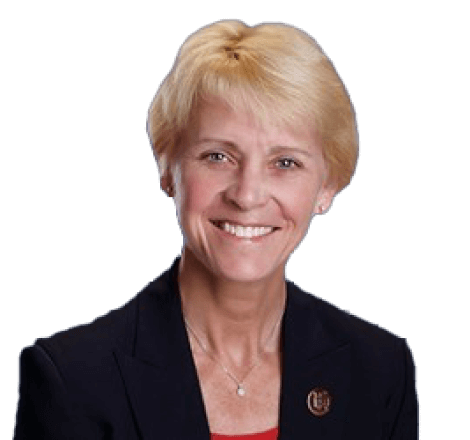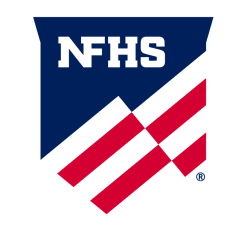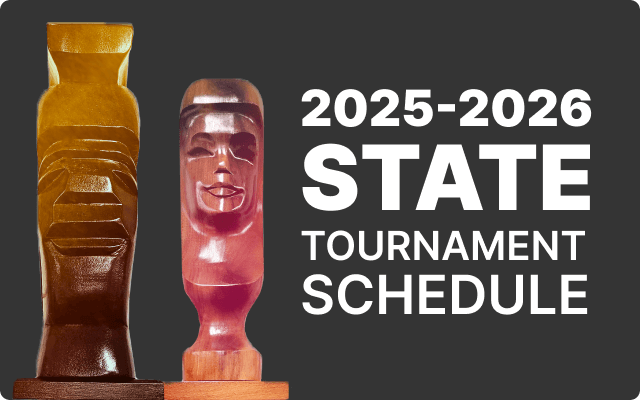The NFHS Voice

 The NFHS Voice
The NFHS Voice
Plans to Preserve High School Sports, Performing Arts Continue Amid Pandemic
Dr. Karissa L. Niehoff, NFHS Executive Director
The numbers in high school activity programs are staggering – 8 million participants in sports, 4 million students in performing arts, 500,000 coaches and officials and 300 million-plus fans at contests throughout the school year.
Whether as a participant, parent, coach, official, teacher, administrator, community supporter or general fan, millions are invested in the greatest education-based programs in the country – high school sports and performing arts.
And unlike most countries, these activities – sports, music, speech, debate, theatre and many others – are cocurricular programs that complete the school-day educational experience. These activities – the other half of education – are vital to the mental and emotional wellness of student participants.
It is against this backdrop that the 51 NFHS member state associations and 19,500 high schools nationwide are having to make incredibly difficult decisions about how to restart high school sports and performing arts this fall amid the COVID-19 pandemic.
Although there has been much attention directed to the return of professional baseball, basketball and football, as well as college sports, the decisions surrounding a safe return of scholastic sports and activities affect more people than all other levels of sport combined.
During a national media webinar hosted by the NFHS earlier this week, we shared that 24 states had pushed back the starting date for sports during the 2020-21 school year. Yesterday, however, that number was reduced to 23 when the governor of Tennessee signed an executive order that permits the Tennessee Secondary School Athletic Association to begin fall sports! This was certainly a dose of good news. In addition, the Kansas State High School Activities Association Executive Board voted yesterday to begin activities on time next month.
In those states that have pushed back the starting date, some of the delays are a few weeks, although several states are not restarting athletics programs until December or January due to concerns about the current level of positive COVID-19 cases.
Among the states delaying until late 2020 or early 2021, California will be compressing three seasons into two, while Nevada will retain its three-season format but will conduct all sports in a January-May timeframe. Washington will divide its sports offerings into four seasons throughout the year, which will push higher-risk sports to the spring.
States that have delayed the start of sports stretch from the Southeast to the Far West. However, in the ever-changing world of COVID-19, more states may ultimately delay school sports.
In most cases where students are back in school, there has been a phased-in approach, beginning with lower-risk sports such as cross country, golf and tennis. Longer delays are more likely with higher-risk sports such as football, and in the case of five states (California, New Mexico, Nevada, Washington and Virginia) and the District of Columbia, football will not be played until the winter or spring seasons in 2021.
We continue to meet weekly with state association directors to assist with the safe return to high school activities. Working day and night with governors, state departments of education and public health, and local school districts, these leaders of our state associations have done a phenomenal job of balancing the need for these vital programs against the safety concerns related to the Coronavirus.
State associations and schools are trying to provide programs – in places where it can be done responsibly – to get students engaged in something that has to do with the life of the school, the life of the team, the life of the activity and the mentorship of the coach.
As many of the revised models indicate, no two states will be alike this year; however, every state has a similar commitment – to do everything possible to provide high school sports and performing arts in the safest manner possible.
We know that students learn better when they are involved in cocurricular activities. We thank our state associations and their schools for their extraordinary efforts during this challenging time.
Dr. Karissa L. Niehoff is in her seventh year as chief executive officer of the National Federation of State High School Associations (NFHS) in Indianapolis, Indiana. She is the first female to head the national leadership organization for high school athletics and performing arts activities and the sixth full-time executive director of the NFHS. She previously was executive director of the Connecticut Association of Schools-Connecticut Interscholastic Athletic Conference for seven years.









